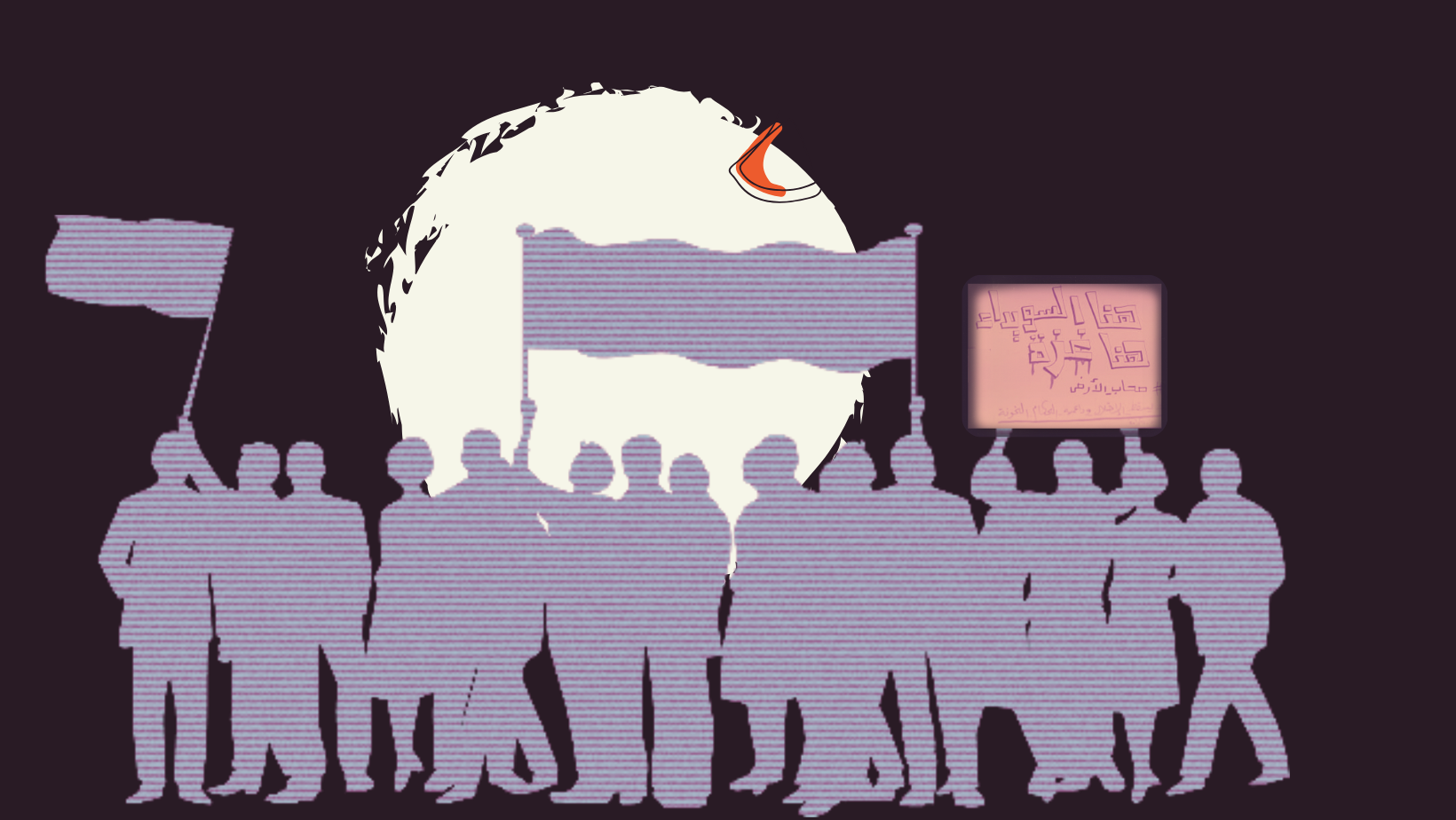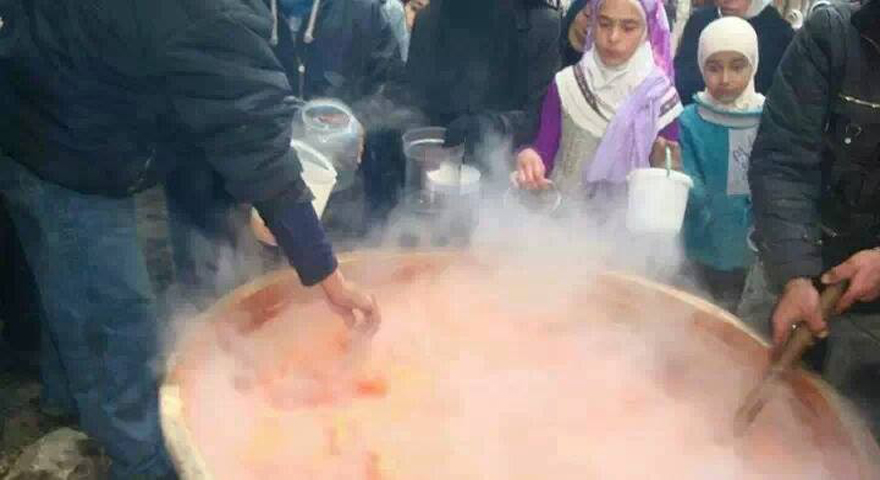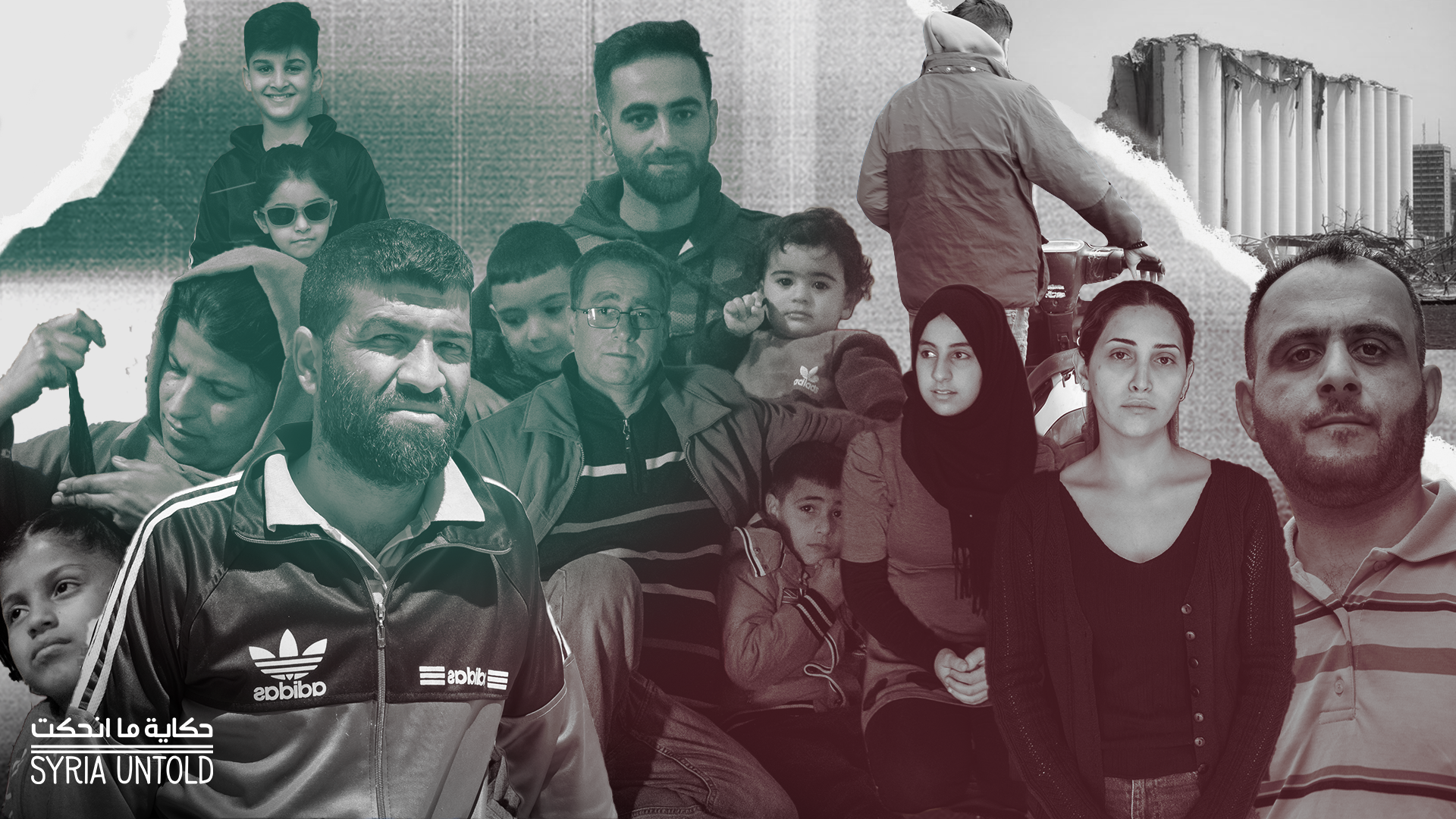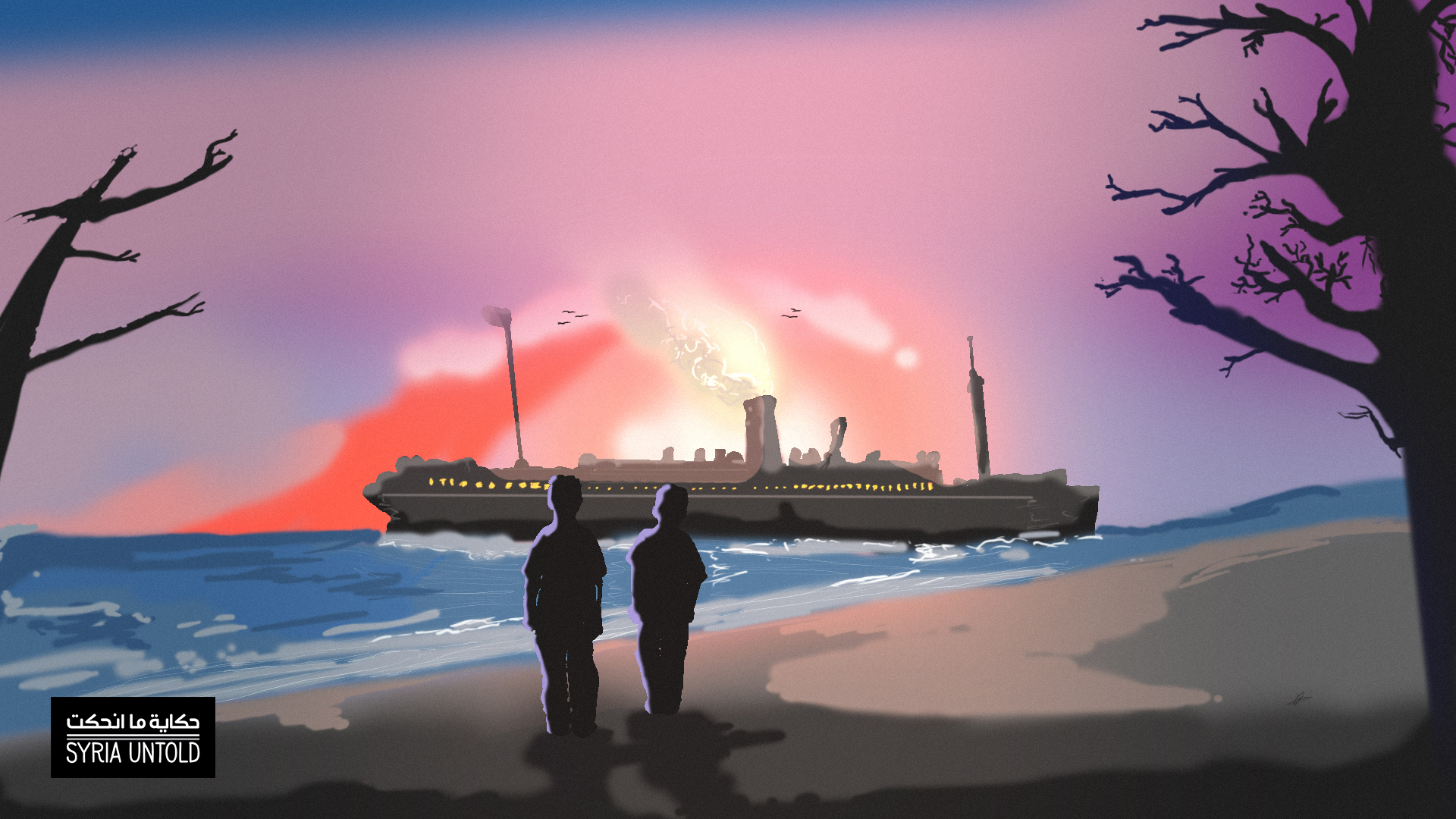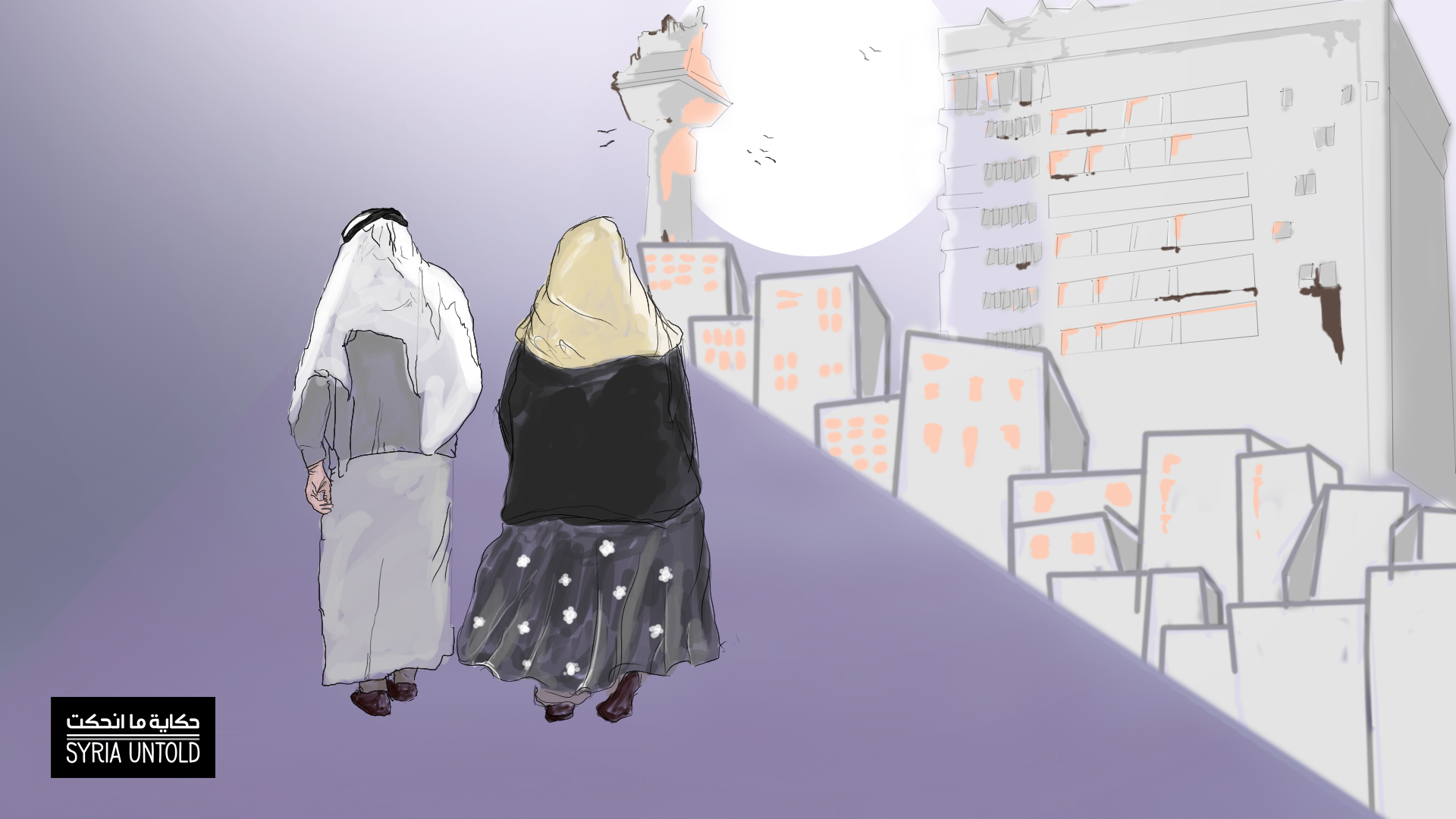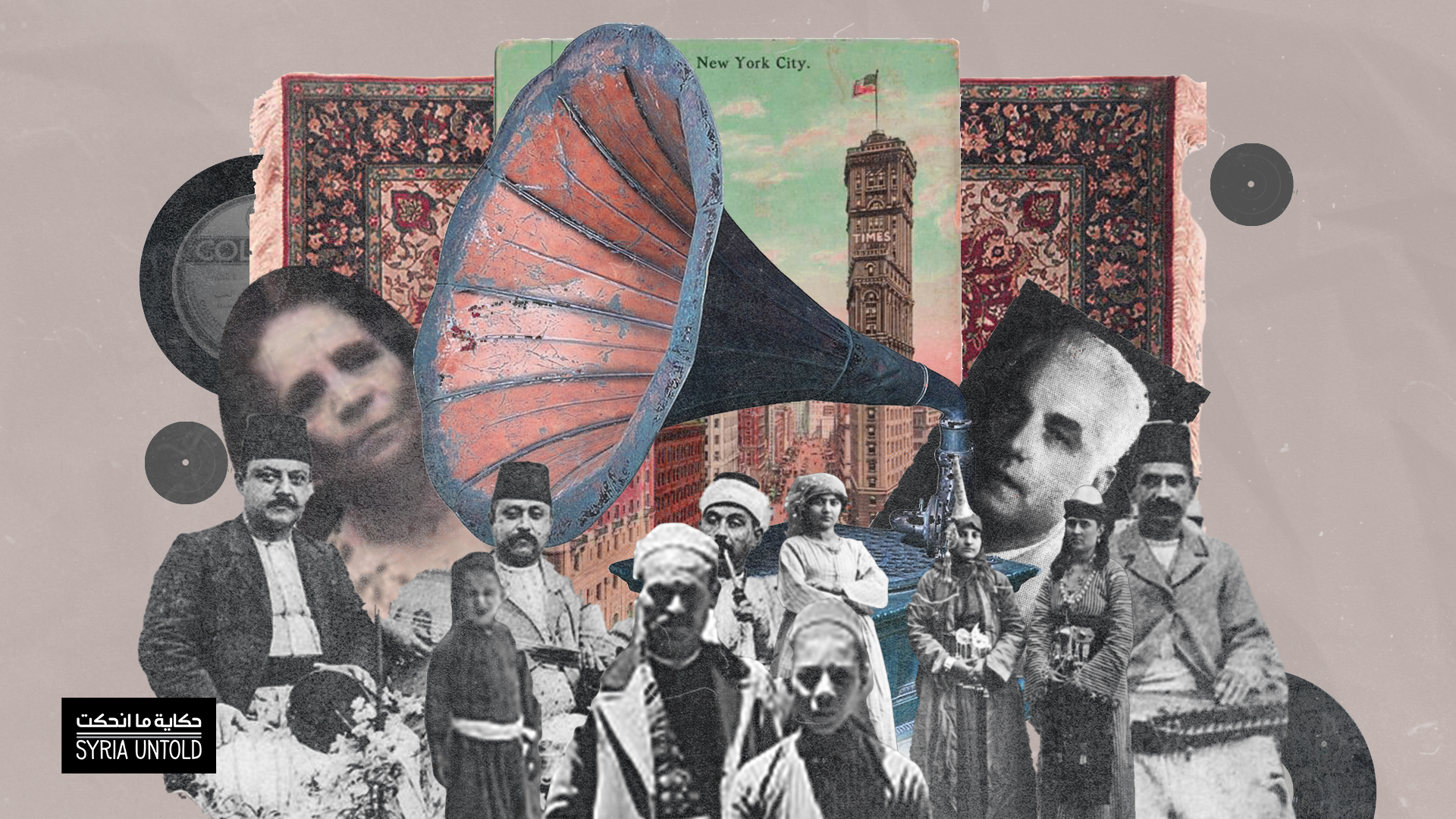Chef Anas Qaterji is currently enduring difficult circumstances. He was displaced and lost his home due to the Israeli airstrikes targeting the Tel Al-Hawa neighborhood in Gaza City. Originally from Aleppo, Qatergji is renowned as one of the prominent chefs who oversaw several restaurants bringing the flavors of Damascus and Aleppo to the Gaza Strip. He stood out among Gazans with his Syrian cuisine, authentic Aleppo attire, and distinctive “Aleppian mustaches,” leveraging these elements to promote his work. He even appeared on Palestinian state television in multiple episodes to introduce the flavors of Damascus.
Qaterji transitioned from a well-known chef in Palestine to a displaced person alongside Gazans, facing death multiple times. He escaped death in Syria, just as he escaped death in Palestine several times. He now lives through the third war launched by Israel on the Gaza Strip.
Qaterji is married to a Gazan woman, but his temporary registration for travel to Egypt to escape the widespread death in Gaza was rejected. “Why do you define my value as a human by the name of the country listed on my passport?”, he says. “I hold a passport that does not grant me the advantage of escaping death. I continue to flee from one place to another to stay alive. Since the beginning of the aggression on Gaza, I have been waiting for permission to travel among thousands who want to escape from Gaza.”
The famous Aleppo chef in the Gaza Strip refuses to be a “war victim”, he does not want his dead body to be left lying in the street to be eaten by cats, or for his body to decompose in the streets without burial, or to be buried under the rubble of buildings. He strives with all he has to stay alive.
Qaterji describes his days in Gaza as wonderful, saying that he lived great days in the besieged strip, but he comes from “a nation facing death daily.” The famous Aleppo chef in the Gaza Strip refuses to be a “war victim”, he does not want his dead body to be left lying in the street to be eaten by cats, or for his body to decompose in the streets without burial, or to be buried under the rubble of buildings. He strives with all he has to stay alive, he says.
“I am Syrian-Palestinian”
Since last October, people in the Gaza Strip have faced one of the worst wars waged by Israel against Palestinians. By the end of last February, the number of Palestinian casualties had reached more than 30,000 dead and over 70,000 wounded, in addition to approximately 7,000 others who were missing under the rubble, according to the Palestinian Ministry of Health in Gaza.
Among the victims were Syrian families and Syrian families of Palestinian origin who had fled to the Gaza Strip to escape the bombardment of the Syrian regime and its siege of Palestinian camps in Syria. However, they lived in the Strip as the Gazans did throughout the years of the Israeli blockade, and some of them perished during the repeated Israeli airstrikes in the past years, the latest being Mahmoud Madi, who left Syria as a child at the age of 11 and was killed in the Gaza Strip at the age of 23.
From Sweida to Gaza... One Uprising
27 November 2023
Since 2012, and especially during the ruling of the late Egyptian President Mohamed Morsi, several Palestinian-Syrian families entered the Gaza Strip, taking advantage of the Egyptian facilitations that allowed Syrians holding Syrian travel documents designated for Palestinian refugees to enter, as well as allowing entry for a few Syrians.
Syrians and Syrian-Palestinians experienced Israeli aggression in 2014, and then the aggression in 2021, and the current war, just like the family of Mahmoud Madi, who originally hails from the village of Um al-Zaynat, near the city of Haifa, which was occupied and its inhabitants displaced in August 1948.
During the recent war, the Madi family's house was destroyed, and the family lost their son Mahmoud. Ismael Madi, Mahmoud's father, says they fled from Homs at the end of 2011 as a family of five. They went to the capital, Damascus, and stayed there for months amidst security conditions and restrictions, then traveled to Egypt using the Syrian travel document designated for Palestinian refugees, through a broker who obtained a security permit for them to enter Egypt.
After five months in Egypt, the family entered Gaza to join some relatives there. “We miraculously escaped the Syrian regime's bombardment of Homs, which was under severe siege and intense shelling at the time. I always say that the bombardment is the same; in Syria, the dictator aimed to kill those who opposed and voiced the truth, and in Gaza, the Israeli forces sought to silence the Palestinian voice of truth. I survived with my son Mahmoud, who continued to speak in the Syrian dialect until he died in Gaza,” says Ismael Madi.
Madi adds that his son was “a student at the Islamic University, studying software engineering. The Israeli army destroyed his dream when they bombed his university in the heart of Gaza City, then destroyed our house in Khan Yunis, and finally killed my son, who loved both Syria and Palestine. When introducing himself, he used to say, 'I am Syrian-Palestinian.'”
Life in Gaza
Many families of Palestinian origin entered Gaza during the years 2011-2014, to the extent that the Prime Minister of the Palestinian Authority at the time and the head of the political bureau of Hamas, Ismail Haniyeh, issued an invitation to Syrian Palestinians to come to Gaza.
According to data from the Palestinian Central Bureau of Statistics, more than 290 families entered the Gaza Strip, including 26 Syrian families, between 2012 and 2013. Some entered Gaza legally through the Rafah crossing, while others entered illegally through the commercial tunnels on the border between Palestine and Egypt.
As the days passed, their numbers decreased by more than half after some managed to travel outside the Gaza Strip through official and unofficial paths. Others were waiting for a response from the United Nations Relief and Works Agency for Palestine Refugees (UNRWA), as a large percentage of them had applied for resettlement due to repeated Israeli aggression, such as the case of Samir Abu Hani, who is 46 years old and hails from the Yarmouk camp in Damascus. He has been living in the Gaza Strip since March 2013.
Abu Hani deeply regrets his decision to come to Gaza with his family and his mother, as he received no assistance from the Gaza government nor a job contract, except for a brief six-month period. Instead, he found himself living in poverty, a situation faced by most people in Gaza. Despite working as a laborer in various fields, the conditions of war and siege only exacerbated his struggles.
The Abu Hani family entered the Gaza Strip illegally through one of the border tunnels. Samir Abu Hani lost his brother, Ahmed, in Syria, who is believed to be one of the forcibly disappeared in the prisons of the Syrian regime. This added additional psychological pressure on him during the recent war, during which he was injured in his leg.
Abu Hani currently lives with his family in one of the schools in the city of Rafah, in the southern area of the Gaza Strip, as their house inside Jabalia camp in the north of the Strip was destroyed. He remembers their displacement from Yarmouk camp and the remaining families there without any assistance. He recalls the sounds of shelling in Yarmouk camp and compares them to the current shelling in the Gaza Strip. He compares what happened in the camp to what is happening now in the strip, saying: “The criminal is the same whether it is the ruler in Syria or the Israeli army here. One practiced dictatorship on us throughout our lives and subjected the people to his command, and the other wants to erase our existence because we hold the Palestinian identity.”
Abu Hani lost contact with Palestinian-Syrian families who used to live near him in Jabalia camp. He says that one of the families (the Abdullah family), consisting of eight members, was completely killed, and they were among the families who fled from Yarmouk camp. Also, his brother's wife, Mayada Ammar, a Syrian from Damascus, was killed during the Israeli shelling, while her husband, Hamdan Abu Hani, and their children survived despite their various injuries.


